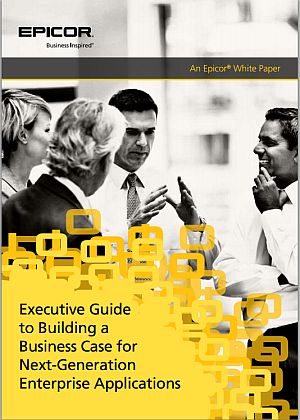Published on the 07/04/2014 | Written by Epicor Software Corporation

Are enterprise resource planning (ERP) systems really ever in need of a change?…
That question plagues most CEOs, CIOs, and CFOs as their legacy ERP systems continue to chug along. It’s no light matter to replace your ERP system. By definition, the ERP system is your financial and operational backbone and reaches into all areas of your business and value chain. Replacing it would appear to be a difficult and intensive process, but done right, it can open unlimited business opportunities. Companies decide to replace their ERP systems for a variety of reasons. At the most fundamental level, the question is whether your current system supports or constrains your ability to execute business strategies that will make your company successful and establish it as an industry leader. These systems typically automate only a single business function and not an entire, cross-functional business process; they demand manual, labor-intensive processes, such as re-keying data into separate systems. Many legacy systems are also inflexible, as they don’t permit organisations to change their business processes to adapt to changing business requirements, nor do they provide visibility across the organisation – let alone across the extended supply chain. And in today’s connected world, many legacy systems struggle to provide the deployment and device flexibility demanded by business users. Who should consider a new ERP system? Review the following statements and see if you can answer ‘yes’ to any of these questions. Table of contents 1. Replacement Decision Time 2. Transparency and Visibility Through Enterprise Performance Management 3. Support for the Global Enterprise 4. Technology Matters—Scalability and Extensibility Through Service-Oriented Architecture 5. Integrated Governance, Risk, and Compliance (GRC) 6. True Cost of an ERP Solution—Delivering Return on Investment 7. Introducing Epicor Next-Generation Enterprise Applications To find out more please download our free Whitepaper Executive Guide to Building a Business Case for Next-Generation Enterprise Applications Why, when, and how to invest wisely… The benefits of incorporating a data warehouse when upgrading your ERP… What to expect for the future of payables… Manual processes can lead to error-prone data analysis… What is a Finance Department and Manager Level KPI?…
…
FURTHER READING

Financial reporting and analytics solutions

Whitepaper: Data warehouse automation and ERP

eBook: The new AP department

Whitepaper: Streamline your financial year-end close

KPIs and Metrics for Finance Departments in 2020




























